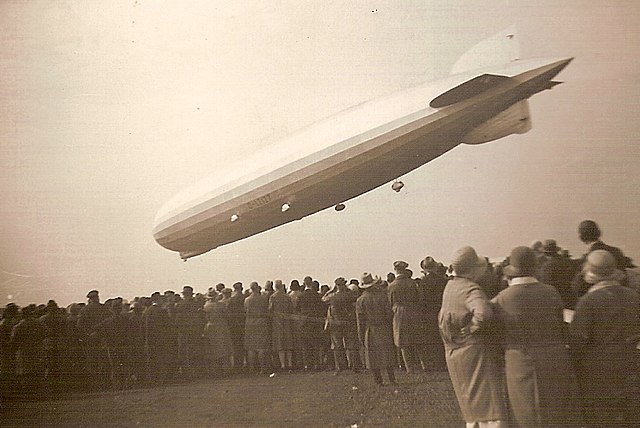1930 Graf Zeppelin stamps
The 1930 Graf Zeppelin stamps were a set of three airmail postage stamps, each depicting the image of the Graf Zeppelin, issued by the United States Post Office Department in 1930, exclusively for delivery of mail carried aboard that airship. Although the stamps were valid for postage on mail sent on the Zeppelin Pan American flight from Germany to the United States, via Brazil, the set was marketed to collectors and was largely intended to promote the route. 93.5% of the revenue generated by the sale of these stamps went to the Zeppelin Airship Works in Germany. The Graf Zeppelin stamps were issued as a gesture of goodwill toward Germany. The three stamps were used briefly and then withdrawn from sale. The remainder of the stock was destroyed by the Post Office Department. Due to the high cost of the stamps during the Great Depression, most collectors and the general public could not afford them. Consequently, only about 227,000 of the stamps were sold, just 7% of the total printed, making them relatively scarce and prized by collectors.

Mail carried aboard the Graf Zeppelin airship bearing three U.S. Graf Zeppelin airmail stamps, first issued in Washington DC, April 19, 1930
Graf Zeppelin D-LZ127, 1928This particular airship was used as the model for the engraving of this 2.60 zeppelin issue, where airship number "D-LZ127" can be discerned on the Zeppelin image
Bottom Plate block from sheet of 65-cent Zeppelin stamps
Plate Block of six stampsA plate block is a portion of four or more stamps taken from a complete sheet of stamps, in 'block' form, including a margin with a plate number that designates a particular printing run.
LZ 127 Graf Zeppelin was a German passenger-carrying hydrogen-filled rigid airship that flew from 1928 to 1937. It offered the first commercial transatlantic passenger flight service. The ship was named after the German airship pioneer Ferdinand von Zeppelin, a count in the German nobility. It was conceived and operated by Hugo Eckener, the chairman of Luftschiffbau Zeppelin.
LZ 127 Graf Zeppelin
One of the engine nacelles, preserved in Zeppelin Museum Friedrichshafen
Gondola deck plan
Theo Matejko's drawing of the crew accommodation on the keel corridor from the first transatlantic flight








